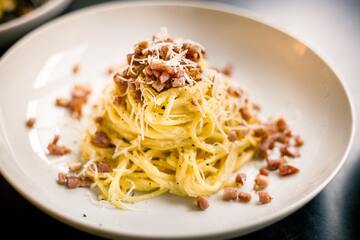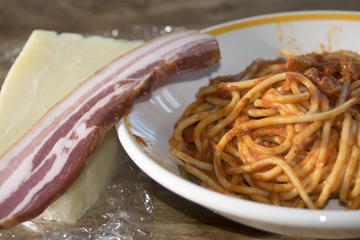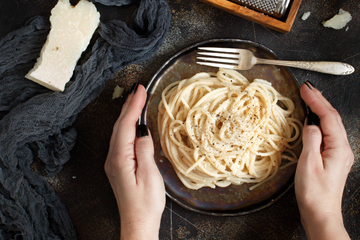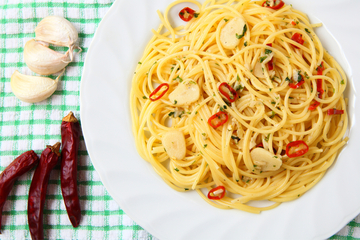How to make pasta alla gricia: Recipe
A good pasta dish is not only tasty but also easy and relatively cheap to construct. When it comes to such dishes, though, few things come close to the simple yet delicious pasta alla gricia. Here's how to make it!
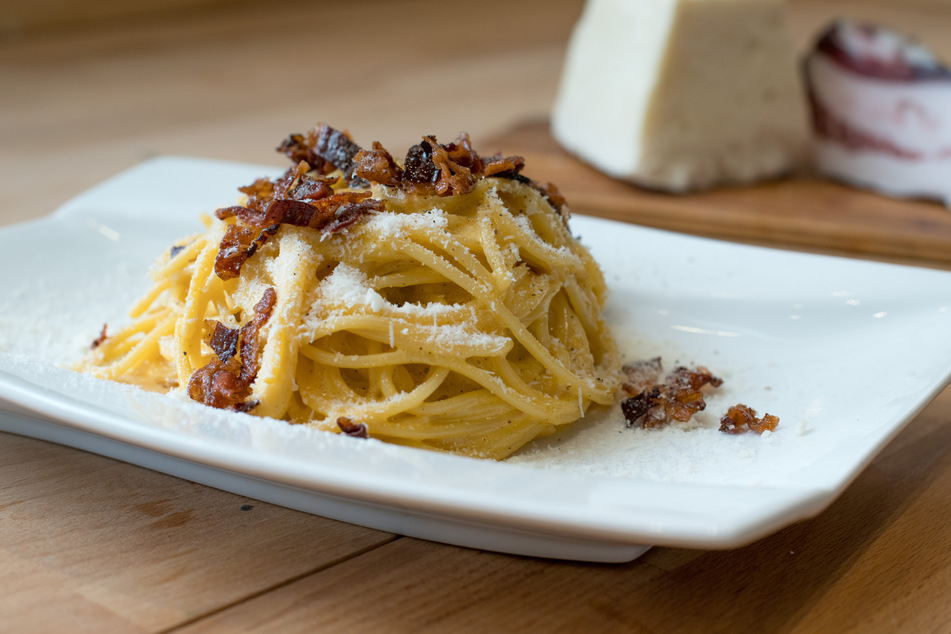
With a little bit of guanciale and a whole lot of pecorino, the classic Roman dish "Pasta alla gricia" is a meal you'll crave each and every day once you've tried it.
Close to carbonara but more complex than cacio e pepe, this is a remarkable and addictive dish that's easy to put together, inexpensive, and unbelievably flavorful.
What more could you want?
So, how do you make the perfect creamy pasta alla gricia? With this recipe, you'll be cooking up an absolute storm for the whole family. It's salty, cheesy, and endlessly yummy – here's how to make pasta alla gricia.
How to make pasta alla gricia
Gricia is one of the simplest pasta dishes in the world, containing only basic simple ingredients but requiring a lot of skill to get right!
It's all about making that emulsion by carefully controlling the temperature and using the right amount of starchy pasta water. There are no eggs involved – making it a little harder than carbonara – and there is strictly no cream allowed.
Here's what equipment you'll need to make pasta alla gricia:
- A wide, light-weight saucepan
- A big pot
- Spatula
- Sharp knife
- Cutting board
- Cheese grater
- Pepper grinder
- Tongs
There is nothing better than a gricia, and you don't even need any complicated equipment. Instead, it is all about the quality of the ingredients you use.
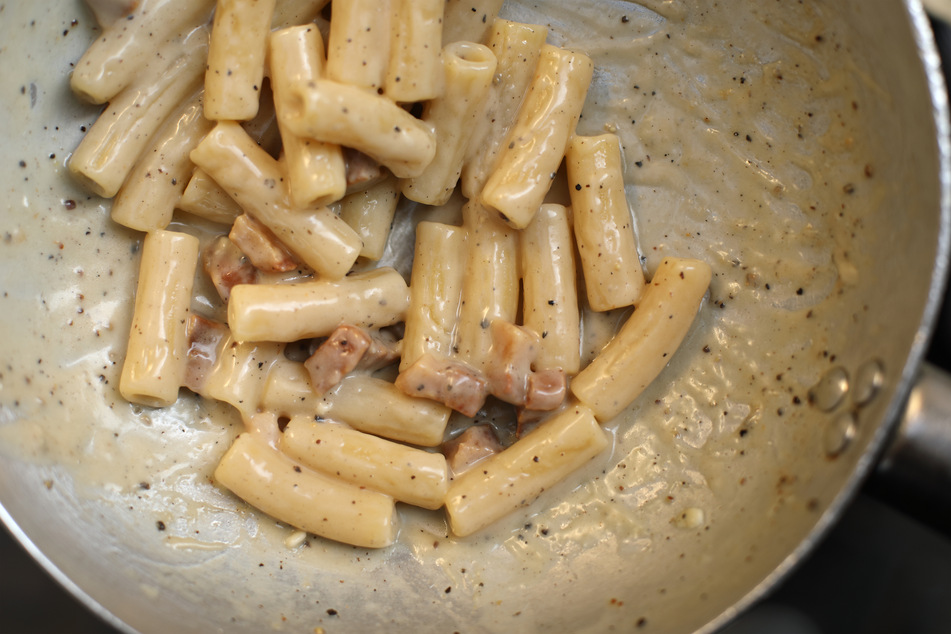
Pasta alla gricia recipe | Ingredients
You don't need many ingredients to make a gricia, but you do need them to be good. Don't settle for parmigiano cheese, as it's just not correct and not the right taste profile for the dish. And certainly don't go using streaky bacon or something like that! If you can't find guanciale, get yourself some pancetta – it's not hard to find.
Here are the ingredients for pasta alla gricia:
- Guanciale, 5-7 ounces
- Pecorino Romano, 1.5 cups
- Pasta (Rigatoni, Buccatini), 12-15oz
- Black pepper
On the proportions: This recipe has been made to serve about two people, assuming that each person eats about a quarter pack of pasta. If you want to make more or less, adjust the quantities proportionally.
Pasta alla gricia recipe | Instructions
The thing about pasta alla gricia is that, despite it being very simple, it is actually quite tricky to make. While carbonara is very straightforward and forming an emulsion is a piece of cake in theory, doing the same in gricia is more or less akin to making a cacio e pepe. As such, it is best to take your time and be very careful about temperature control throughout.
Here's how to make pasta alla gricia
Step 1: Fill your large pot with a healthy amount of water and salt it generously. Put the pot on the heat and bring it to a boil.
Step 2: In the meantime, grate your cheese on the smallest setting available. Remember to never buy pre-packaged, pre-grated cheese as it's poor quality and not that much cheaper than the good stuff.
Step 3: Chop up your guanciale into large chunks, each about the size of the end of your index finger or about a half-inch cube.
Step 4: Put your pasta into the water and give it a stir, making sure to get it all submerged. Look at the instructions on the pasta box and boil it for about two minutes less than it recommends for a perfect al dente.
Step 5: While the pasta is boiling, put your guanciale into the pan. Slowly increase the temperature, rendering down the fat and then crisping up the pork itself. You do not need any oil for this process if you do it slowly, as it will release its own fats.
Step 6: Take out a small amount of pasta water, about a ladle-full, and put it into a bowl. Once it has cooled down a little bit – about 170°F – add about three-quarters of your pecorino cheese as well as a healthy dose of pepper.
Step 7: Mix the ingredients together to form a relatively thick paste.
Step 8: After conserving a little more of the pasta water, drain your pasta and then chuck it into the pan with the guanciale. Toss it and fry until it's a golden color and completely mixed in with the pork.
Step 9: Having taken it off the heat and waited until it's about 175°F, add another ladle of pasta water and your cheese-pepper-water mix.
Step 10: Rigorously toss together, adding a little more water if needed, until the pasta is coated in a thick and creamy sauce.
Step 11: Serve garnished with the leftover cheese and a little crack of pepper over the top.
With a little bit of patience and a couple of practice runs, you'll get that temperature control in place and won't have any trouble. Then you can enjoy your delicious pasta alla gricia!
What is gricia?
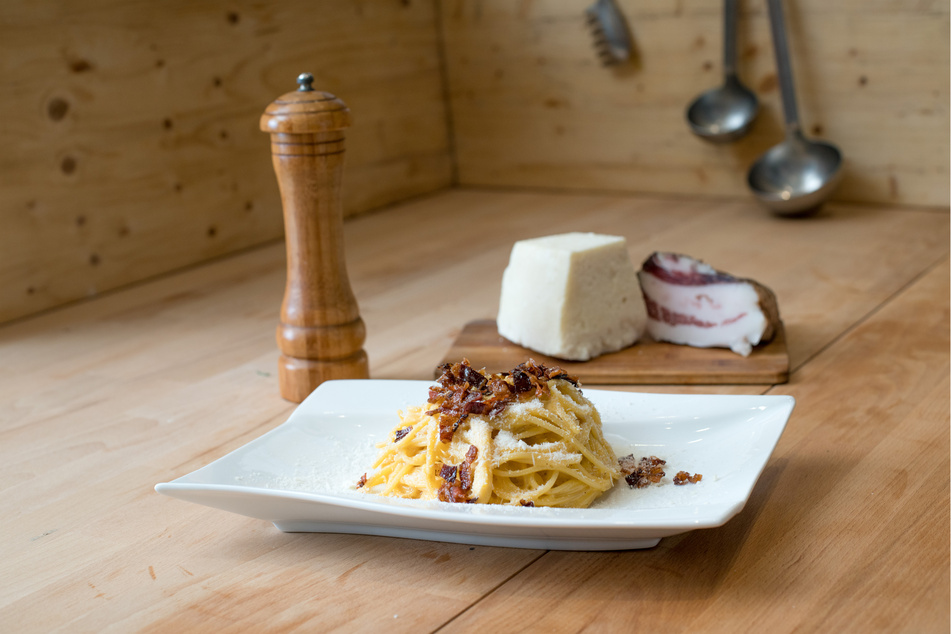
Gricia is one of the four most famous and traditional pasta dishes to come out of Rome, and it's made up of only four simple ingredients. In essence, gricia is pasta that has been tossed in an emulsion made from starchy water and pecorino cheese with guanciale added. See? It really is quite simple.
Its name originates from the word "gricio" or "grici," which refers to sellers of common food in papal Rome. The dish was known for its simplicity and therefore got the name as it was entirely made up of items found and local "gricios." It shares many of the same ingredients with amatriciana, carbonara, and cacio e pepe.
While possibly the least famous of the main four pasta dishes of Rome, it is just as delicious as the others, with a creamy consistency and a saltiness that punches you right in the gut. All in all, it's incredible!
Pasta all gricia vs. carbonara
Carbonara and gricia are very similar dishes, the only difference being them is the lack of egg yolk in the latter dish. When making a carbonara, you mix together your grated pecorino and egg yolks, with a crack of pepper and use that to make the emulsion. With gricia, you are just using the pecorino and pepper, with no eggs in sight.
As a result, gricia can be a far more difficult dish to prepare because when you mix the cheese in without it being bound to the egg, it is likely to go stringy. To avoid this, you must make sure to control the temperature carefully or alternatively make a paste with the pasta water, as described, before combining it with the pasta itself.
While carbonara is clearly the more famous and well-known dish, no one can deny how effortlessly delicious gricia can be. With good cheese and good guanciale, this is a meal you won't want to skip out on!
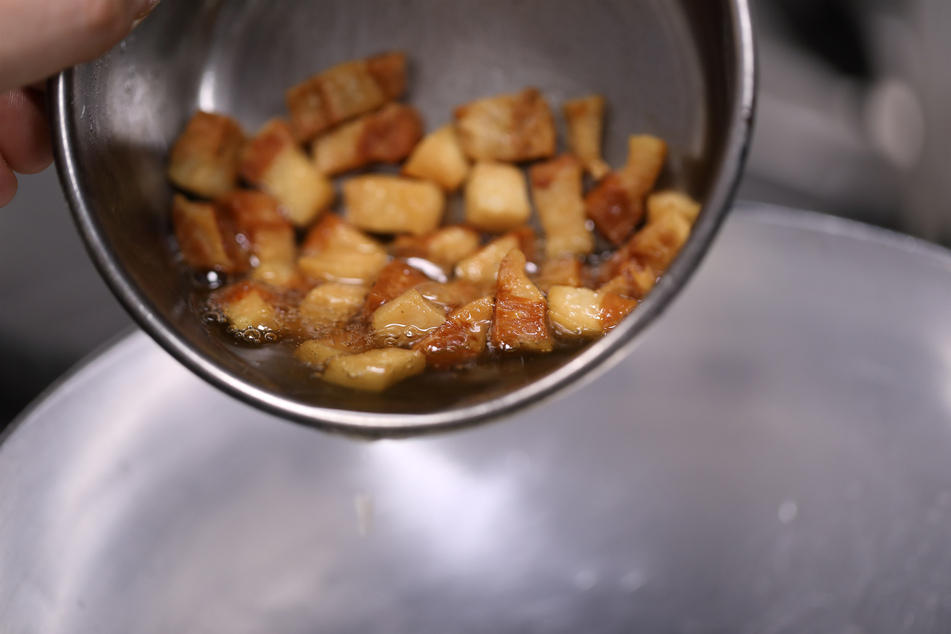
Gricia is one of Rome's big four pasta dishes
If you have ever been to Rome and properly explored the city, you would have noticed something extraordinary: Four different pasta dishes dominate the landscape. These four dishes – carbonara, amatriciana, cacio e pepe, and gricia – all center around pecorino, the king of all Italian cheeses.
All but one of those dishes (cacio e pepe) incorporate guanciale, the legendary cured pork cheek that lends carbonara its iconic taste. Yet, while we all discuss these classic ingredients, the real star of the show, no matter which dish you choose, is the pasta water itself – creating that emulsion is key to achieving the creamless-creaminess we all crave.
Sure, the pizza is great, the wine is legendary, and the tiramisu will leave you wanting more, but nothing will beat these four fabled pasta dishes. They are all creamy, they are all tasty, and they all fill your belly with that feeling we all want from a good meal – satisfaction!
Cover photo: IMAGO/Pond5 Images

